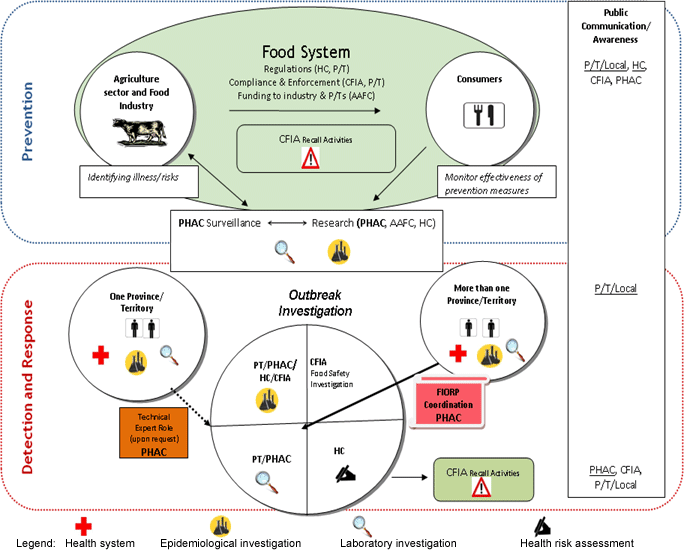Appendix E: Evaluation of food-borne enteric illness prevention, detection and response activities at the Public Health Agency – Agency's role
Appendix E: Public Health Agency´s Role in Food-Borne Enteric Illness Prevention, Detection and Response Activities

Text Equivalent
Appendix E: Public Health Agency’s Role in Food-Borne Enteric Illness Prevention, Detection and Response Activities
Appendix E illustrates the role of the Public Health Agency and partners in the areas of prevention, detection and response activities to food-borne enteric illness. Both Health Canada and the provinces and territories are responsible to prevent food-borne illness by developing food regulations and the Canadian Food Inspection Agency along with the provinces and territories are responsible to maintain compliance and enforcement of these regulations to ensure non-contaminated food in the system. The Public Health Agency’s role is in surveillance and research. Specifically, the National Integrated Enteric Pathogen Surveillance (C-EnterNet) Program examines risk factors and helps to identify the sources of contamination, and the Canadian Integrated Program for Antimicrobial Resistance Surveillance (CIPARS) monitors trends in antimicrobial use and resistance in the food system. In addition to surveillance activities, the Public Health Agency also conducts upstream prevention activities that look at the farm-to-fork continuum to better understand the cause of illnesses. These activities include risk modelling which predicts the “weak points” in the food safety system where health risks arise from pathogens in food and research synthesis which analyzes the scientific literature on food safety risks to determine the best scientific evidence.
Page details
- Date modified: